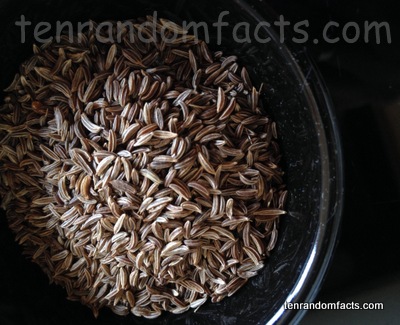Do not be carried away with caraway seeds.
- Caraway seeds grow on the caraway plant, that has the scientific name of ‘Carum carvi’, and is from the family Apiaceae, the family of parsley and carrot.
- Caraway seeds are shaped as a crescent and grow to be 2 millimetres (0.08 inches) in length.
- Caraway seeds are technically dry fruit, rather than seeds, from the European, and possibly Asian and North African, biennial plant of the same name that grows to be 40 to 60 centimetres (15 to 24 inches) in height.
- Caraway seeds have a taste hinting of anise and a smell of sweet pepper, and sometimes caraway thyme can be used as a replacement, along with similar flavoured spices that include anise, fennel, dill, cumin, liquorice-root and coriander.
- Caraway seeds are often used as spice, most famously in bread, but are also used in cakes, desserts, alcoholic beverages, German sausages, curry and Indian traditional food, among others.
- Oil can be distilled from caraway seeds, that is then used to add a pleasant smell to soap, perfume and other fragrant toiletry products.
- Caraway seeds are probably one of the oldest used spices, having been eaten for thousands of years, and in Ancient Egypt they were used to treat digestive system problems, and is still believed to be effective for the digestion of foods, soothe stomach pains and cramps, and to help prevent wind buildup.
- Caraway seeds have significant quantities of zinc, vitamin C, manganese, potassium, magnesium, copper, phosphorus and protein, and are high in calcium and dietary fibre.
- Caraway seeds were believed to ward off witches, so they were historically used as a ‘protection food’.
- Caraway seeds are typically brown to grey in colour, with a pale outline, and are harvested in the middle of summer upon ripening.
Bibliography:
Caraway, 2014, Wikipedia, http://en.wikipedia.org/wiki/Caraway
Grieve M, Caraway, 2014, Botanical.com, http://www.botanical.com/botanical/mgmh/c/carawa20.html
History of Caraway, 2014, Our Herb Garden, http://www.ourherbgarden.com/herb-history/caraway.html






